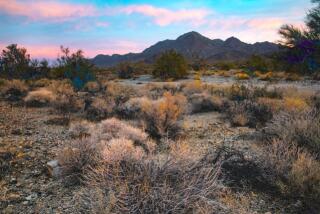Save the Giants
- Share via
The majestic sequoias of the central Sierra Nevada are giants of the ages. They are among the oldest and largest living things on Earth--surviving as long as 3,500 years and growing up to 300 feet high with a trunk diameter of 30 feet. The giant sequoias (Sequoia giganteum) have been overshadowed lately by the battles over the fate of old-growth stands of the taller coast redwood (Sequoia sempervirens).
But now, President Clinton is considering the creation of a new national monument to grant special protection to 38 sequoia groves scattered outside of Yosemite and Sequoia-Kings Canyon national parks. Most are now part of Sequoia National Forest, east of Fresno.
The future of commercial logging is a factor in this decision, but the long-range value of these lands rests with recreation and appreciation of a unique environment. These groves are survivors among many that have been cut during the past century. They need the special protection that monument status would confer.
Clinton had ordered Secretary of Agriculture Dan Glickman to conduct a study and recommend whether to create the monument under authority of the Antiquities Act of 1906. On Friday, Glickman recommended that Clinton establish a monument of 385,000 acres, giving the president time for a possible formal announcement on Earth Day, April 22.
Monument status would grant greater protection to the trees than at present but is less restrictive than national park status. Mining and logging generally are not allowed in a monument, while grazing and recreation are. Rules can be adjusted to the specific needs of an area.
Timber companies have protested the proposed action, but not so much because of the protection for the big trees themselves, which--unlike the tall coast redwoods--do not provide choice lumber. Conditions imposed in 1992 by then-President George Bush prohibit logging within 1,000 feet of a sequoia, but that could be undone by Congress. The timber companies are concerned they won’t be able to cut other species in the sequoia areas.
Loggers argue that they keep the forest healthy by clearing underbrush and preventing catastrophic forest fires. Actually, a certain amount of undisturbed undergrowth and other tree species are needed as mammal and bird habitat. Historically, the fire-resistant sequoias thrived through periodic fires that cleared the forest floor. This can be safely accomplished with controlled burns. In fact, fire helps tree seeds to germinate.
There’s no question that politics surround the monument issue. Clinton is interested in leaving a legacy of environmental protection. But the outcome is what’s important. In this case, these unique giants and their environment need to be preserved for future generations.
More to Read
Sign up for The Wild
We’ll help you find the best places to hike, bike and run, as well as the perfect silent spots for meditation and yoga.
You may occasionally receive promotional content from the Los Angeles Times.






